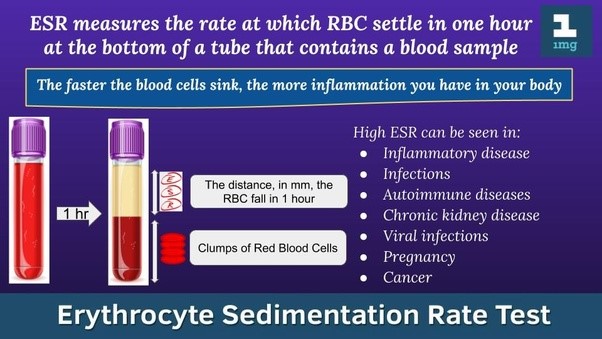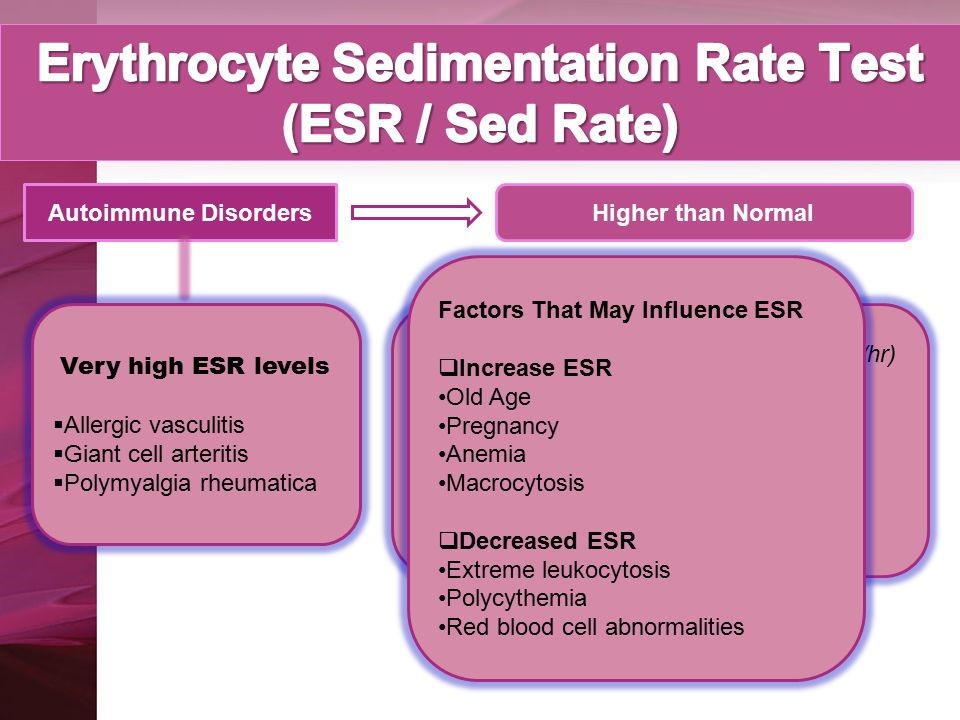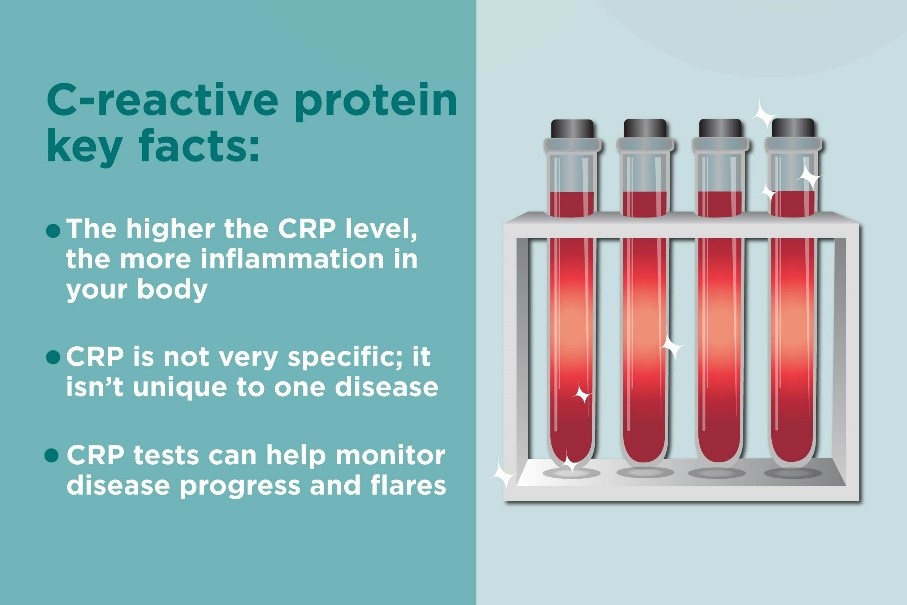Blood Tests to Detect Inflammation.
ESR are blood tests that detect inflammation. These are useful tests to help diagnose and monitor the activity of certain diseases.

Inflammation and blood proteins
If you have inflammation in a part of your body then extra protein is often released from the site of inflammation and circulates in the bloodstream. The CRP and ESR blood tests are commonly used to detect this increase in protein, and so are ‘markers’ of inflammation.
Erythrocyte Sedimentation Rate (ESR)
A blood sample is taken and put in a tube that contains a chemical to stop the blood from clotting. The tube is left to stand upright. The red blood cells (erythrocytes) gradually fall to the bottom of the tube (as a ‘sediment’). The clear liquid plasma is left at the top. The ESR measures the rate at which the red blood cells separate from the plasma and fall to the bottom of a test tube. The rate is measured in millimetres per hour (mm/hr). This is easy to measure as there will be a number of millimetres of clear liquid at the top of the red blood after one hour.
If certain proteins cover red cells, these will stick to each other and cause the red cells to fall more quickly. So, a high ESR indicates that you have some inflammation, somewhere in the body.
What conditions affect the ESR and CRP level?
The ESR and CRP level are raised many inflammatory conditions. For example:
- Certain infections (mainly bacterial infections)
- Abscesses
- Certain types of arthritis
- Various other muscular and connective tissue disorders
- Tissue injury and burns
- Cancers
- Crohn’s disease
- Rejection of an organ transplant
- Heart attack
Some conditions lower the ESR. For example, heart failure, polycythaemia, sickle-cell anaemia, and cryoglobulinemia.
When are these tests used?
To help diagnose diseases
The ESR and CRP are ‘non-specific’ tests. Basically, a raised level means that ‘something is going on’, but further tests will be needed to clarify the cause of the illness. For example, you may be ‘unwell’ but the cause may not be clear. A raised ESR or CRP may indicate that some inflammatory condition is likely to be the cause.

To monitor the activity of certain diseases
For example, if you have rheumatoid arthritis, the amount of inflammation and disease activity can partially be assessed by measuring one of these blood tests. As a rule, the higher the level, the more ‘active’ the disease. The response to treatment may also be monitored as the level of CRP or ESR may fall if the condition is responding well to treatment.
Both tests are useful. However, changes in the CRP are more rapid. So, for example, a fall in the CRP within days of starting treatment for certain conditions is a useful way of knowing that treatment is working. This may be important to know when treating a serious infection or a severe flare up of an inflammatory condition. For example, if the CRP level does not fall, it may indicate that the treatment is not working and may prompt a doctor to switch to a different treatment.

